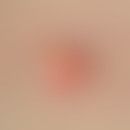Synonym(s)
DefinitionThis section has been translated automatically.
Odourless and non-sticky repellent with a broad spectrum of action against insects.
The active ingredient Icaridin is highly effective in its action on insects. Therefore, products containing this ingredient are recommended, especially for the defence against disease-transmitting insects. Icaridin has been used in Australia and Europe since 1995.
Icaridine was tested for its efficacy against various ectoparasites and compared with the classical repellent DEET. A broad spectrum of efficacy was shown against Anopheles mosquitoes, Aedes mosquitoes, Culex mosquitoes and the common wood tick, among others. Compared to DEET, it is better tolerated by the skin, is less absorbed and causes less damage to textiles.
PreparationsThis section has been translated automatically.
Autan, bayrepel, picaridine, saltidine, doctane
Note(s)This section has been translated automatically.
The preparation should not be used in infants < 2 years of age.
LiteratureThis section has been translated automatically.
- Hofmann H (2015) Repellants. In: E v.Stebut (Ed.) Travel medicine. Springer Publishing House Berlin-Heidelberg294-297
- Care F (2009) Prevention with repellent in children. Arch Pediatr 16 Suppl 2:S115-122.
Uzzan B et al (2009) Efficacy of four insect repellents against mosquito bites: a double-blind randomized placebo-controlled field study in Senegal. Fundam Clin Pharmacol 23: 589-594.



